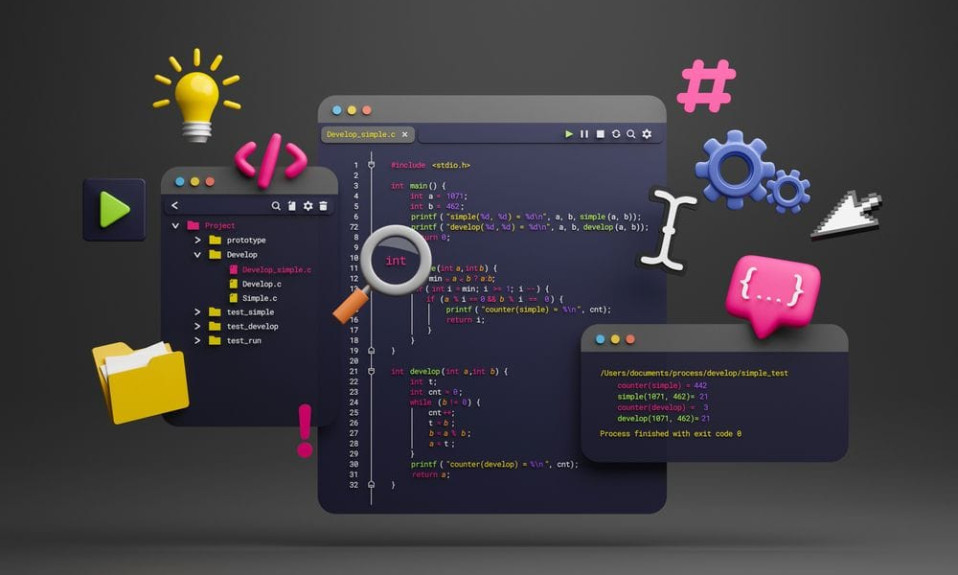One of the fastest ways to build wealth is to turn advertising into profit. When you crack the marketing funnel, getting new prospects and converting them into paying customers is not the problem. Delivering the products and services at a good enough profit margin, to reinvest back into advertising is the problem.
The challenge that most businesses face is not just marketing and sales. The problem is that the cost of their product and delivery is too high that it doesn’t leave enough money for advertising. The margins are thin. Sometimes they raise funds and invest in advertising to scale, but that’s short-lived. There are plenty of examples of that.
Many businesses think that traffic is the problem. They look for ways to get free traffic or cheap traffic. And within a short period of time, they realize that one cannot wish for cheaper ad costs. One can only increase margins to sustain the increasing ad costs which are inevitable. This includes fixing the sales funnels so that the price can be increased without a reduction in sales volume.
Traffic is available to any business that is ready to pay for it. Just like you can buy stuff from Amazon you can buy traffic from Google, Facebook, or other networks and marketplaces.
The only question is: can you afford to pay for it? Can you get an ROI from the ad spend?
The business that can spend the most to acquire a customer, wins. – Russel Brunson
Let’s say someone makes a widget that sells for $100.
Here are the costs of it:
- $50 for manufacturing
- $10 for shipping
- $10 in operational expenses including staff expenses
The total cost of each widget on average is $70.
Now if someone sells this widget for $100, they would make a $30 profit. But this is not the only such widget in the world. There are many competitors, some are equally good as well. And let’s say the demand for this widget is not sky-high.
People are not going to come to buy this without spreading the word about it. And there is a cost to spreading the word. Unless there is traction, you cannot scale sales and if you cannot scale, you can’t make profits that can be reinvested into making the product better, reducing the need for depending on ads. It’s a catch-22 situation that most businesses are stuck in.
So the company that sells the widgets for $100 decides to advertise so that they can scale the sales. They spend $10 to acquire each customer. This leaves them with a $20 profit margin.
But the problem with advertising is that the cost to acquire each customer (CAC) keeps going up as there are more competitors in the market. Not just the competitors, but other products and services targeting the same customer will also increase the cost of advertising through bidding. Ad platforms have to give the ad space to the highest bidder.
The company that can spend the most to acquire a customer wins the marketing game. So the business decides to cut profit margins and increase ad spending. Let’s say the business is now spending $20 to acquire each customer instead of $10.
Now instead of a $20 profit margin, they have only $10. And the business continues to do it for a while. Until they have to increase their CAC again to keep up the same volume. Almost every business goes through this stage. They have to spend more to keep up the same volume.
They can’t afford to scale down the production because the investments in producing a certain capacity of widgets per month are already made. And scaling down is not sexy, esp if you have investors. Scaling down involves letting people go as well, which destroys the morale in the company.
Unless some miracle happens, the business will keep spending more and more on ads until the margins go down to $0. In some cases, it goes -ve margins.
An increase in the cost of customer acquisition (CAC) is not a probability. It is an eventuality. Every day new businesses are coming into the market, sometimes get funded by investors, and even lose money on every sale to capture the market share and increase valuation.
Once the margins go to near $0, there are only two things that the business can do to proceed from there.
1. Reduce the cost of production (using economies of scale, or through a reduction in quality). Economies of scale won’t happen without external funding, investing in innovation, and going into losses for a while. And the reduction in quality might affect the brand badly and the business will go out of the market.
2. Increase the prices of their products. But increasing prices is easier said than done. It is very rare that prices will go up but the demand will not go down. Most of the markets are price elastic.
With lower prices, you get higher demand. With higher prices, you have lower demand. This is business 101. If the demand and conversions go down, the higher cost might not be able to sustain the business, even if there is profit in each unit sale because the fixed costs remain the same.
This is the biggest challenge that most D2C brands face. Their costs to acquire customers keep going up. And they do not know how to maintain the same volumes they had before. And they complain that „the glory days are gone.”
Unless they have a very unique patented product with recurring sales that drives up the LTV of the customer, they will go out of business. Startups shut down mostly because of this reason. The second biggest reason is co-founder conflict which is a topic for another day.
That’s why digital products that have low replication costs attract a lot of attention.
Enter Digital Products
Digital products do not have the same problem as physical products. There is no manufacturing cost, no logistics, no warehousing, and no need to manage operations at a scale that physical products demand.
There are two types of digital products:
On a side note, the distribution of digital products needs physical infrastructure. You need laptops, tablets, mobile phones, and an internet cable infrastructure to make this possible. It is a huge market and no wonder Apple is the most valued company in the world. They are building the foundation for the distribution of digital products. You are using a physical device to read this content right now.
If you are reading this article, starting an internet company, laying fiber optic cables, launching internet satellites like StarLink, or manufacturing computers or mobile phones is not going to be your cup of tea. They are winner take all markets with intense competition from some of the biggest companies in the world.
Once the infrastructure is in place, code and content can replicate themselves through these devices with little to no cost. This gives tremendous leverage.
Talking about leverage, let’s dive deeper into it before we talk about digital products…
Leverage
If you want to scale a business and make profits, you need leverage. There are 3 big forms of leverage that businesses have been applying for decades, if not centuries.
They are:
Capital: If you are starting a business with a good enough upfront capital, you have leverage. You can invest in better infrastructure and talent that can help you make better products and services. Capital is still an important form of leverage today and that’s why venture capital makes an integral part of our ecosystem. And companies raising funds are celebrated.
Talent: If you can hire more people and manage them, you get leverage. Capital is required to hire good talent, but good talent also comes with a great founding team and vision. The sum of the parts is more than each individual on their own. For example, you cannot operate an assembly line without multiple people dividing their labor within themselves and specializing in the task that they do. If you have talented people, you have even more leverage.
Time: A business that has been around for a long time has certain leverage points such as knowing the market better, brand and reputation, existing customer contacts, and a well-refined process that has gone through a lot of trial and error. They also can attract better talent and capital from investors because they are known and trusted. (This works in favor only when the business is managed well, is built on strong ethical principles, and makes sure that there is a positive compounding of trust with all the stakeholders – customers, team, and investors).
A business that can combine all these forms of leverage effectively is the business that is more likely to win.
Google, for example, has funding, has great talent, have been around for a long time and that’s why they are so successful.
Almost any successful company that you can think of has combined all these three forms of leverage.
But there are two more leverage points you can add, and these are modern-day leverages. And you can combine all the 5.
- Capital
- Talent
- Time
- Code
- Content
Google is built on code, and it delivers content via code. Google doesn’t make most of the content but organizes the world’s information on its search engine. Recently they have also started delivering their content in the form of search results without linking a website to it. (Sometimes this data is also scraped from other websites which raises an ethical concern, but that’s how the world goes around).
Yes, Google now manufactures devices as well, but the devices are not a part of wanting to get into the physical products category. Their devices (Android Phones etc) are actually a catalyst for their digital platform – their search engine and now their app store. Again, adding code and content to the mix.
So let’s build software. Ditch any possibility of creating physical products? Is that the answer? Not so easy.
Let’s look at the different types of digital products that you can build as an entrepreneur and look at the pros and cons of each.
1. Digital Products: Software
The most obvious digital product is software. That’s what happened at the beginning of the computer revolution.
From Microsoft Windows to Lotus Office Suite (if you have ever heard of it, it was an alternative to Microsoft Office), everyone wanted to develop a piece of software that can perform certain functions and sell them.
While certain businesses wanted to sell it to the consumer market many businesses sold it to enterprises. Enterprise software became extremely profitable, at least at the beginning of this revolution because of big ticket sizes and low replication costs.
The software was loaded into floppy disks or CDs and could be shipped across the world. The cost of making the software was a one-time thing, replicating it and shipping it was easy and cheap. This is when the leverage started kicking in. Combined with capital, time, and leverage, billion-dollar companies started emerging in this category.
Fast forward a decade, the computer revolution gave birth to the internet revolution, and SaaS started making its first appearance. SalesForce was one of the first companies to build a SaaS product. Enterprises no longer needed to install the software on their servers and internal networks.
They could just use it off the web and updates became easier and faster. SalesForce was one of the first companies to master this and they even had a logo that said „No Software”.
It is software but on the cloud. That’s why the logo has a cloud in it. SaaS even today remains to be one of the most profitable segments.
However, there are challenges with SaaS. Because SaaS is a race to the bottom with its pricing. There is a cut-throat price war with SaaS companies because since the distribution cost is near zero, companies are giving lower-priced offers for the same features.
Here are some examples:
- FreshDesk is cheaper than ZenDesk
- Pabbly is cheaper than Zapier
- ClickFunnels is cheaper than Instapage
And the list never ends.
Though I am someone who doesn’t hesitate to pay for good software, I wouldn’t want to pay more for the same quality and features. I moved from Zapier to Pabbly because they have the exact same features at less than half the cost.
I moved away from Instapage because I was paying $2000 a month for the amount of traffic I was getting. Now I pay $100 a month for equally good software and it gets the job done.
Economies are never going to be in a perpetual state of growth and when it shrinks, people will want to cut costs.
This is one of the reasons why I am not attracted to building software as an entrepreneur, though I have the resources for it. It would be difficult to keep building it in the long term. Well-funded companies can develop the same software that I am building, make it cheaper, spend more on ads, and drive me out of business. No thank you.
(But don’t get me wrong. What I have said above applies only to standalone software. The better alternative is to build a software platform. And I will talk more about platforms in the later section of the article.)
2. Digital Products: Content
The second category of profitable digital products is content-based products. Training and ed-tech to be precise.
All the following ed-tech brands are pure content businesses, selling content in various formats:
- MasterClass.com
- SimpliLearn.com
- UpGrad.com
- Udacity.com
- PluralSight.com
- Codecademy.com
- Brilliant.org
And then you have a gazillion personal brands who are trainers and coaches who have successfully built a business around their personal brands. (Including my own Digital Deepak brand). I have generated more than $2 million in sales selling my digital marketing training programs. People want to learn from me because they look up to me and would rather learn from me than a brand that they cannot relate to.
While personal brands can be a great way to generate revenue with content sales for the individual, it is extremely challenging to scale the business beyond a few million dollars a year. Different people like to learn from different mentors and it is NOT a winner-take-all market.
Read this article to learn more about digital mentoring for personal brands. Individuals can publish books, ebooks, online DIY (do it yourself) courses, cohort-based training programs, masterminds, and membership sites and they can also do consulting (though it is more of a service than a product). That’s how I have generated most of the revenue.
The challenge sets in when you try to scale. Many ed-tech brands have created subscription business models but they are in the same category as video streaming services. We all know how the Netflix story went. When there are multiple streaming platforms targeting the same market, it becomes challenging, even for a company like Netflix to retain subscriber growth. Once the subscriber growth flatlines, the valuations go down and it becomes difficult to reinvest into more content creation.
So if digital products (code and content) are the holy grail of leverages, and if both these business models have their limitations, what is the solution?
Platforms.
3. Digital Platforms
The entire article until now is building up the case for platforms. Platforms thrive on network effects. And once the network effects set in, it becomes the ultimate moat.
Here are all the platforms that are built on code, and publish content in one way or the other…
- Microsoft Windows is a platform on which different apps can be published (The same goes for iOS, Mac OS and Android)
- Kindle Reader platform by Amazon for publishing digital books
- Sony Playstation is a platform for publishing games (and Xbox)
- Udemy is a platform for course creators to publish content
- Spotify is a platform for music artists and companies to publish music
You get the idea.
Then you have platforms, which are not primarily content-based, but still content is what they publish…
- Airbnb is a platform for house owners to publish details about their property and short-term tenants can find details about the property.
- Practo is a platform that connects doctors and patients
- American Express is a payment platform that connects merchants and consumers (the same goes for PayTM, Google Pay, and so on).
- eBay is (or was) a platform that connected sellers and buyers
- Uber is a platform to connect cab drivers and passengers.
- Amazon is a platform to connect buyers and sellers (though they sell a large portion of products through their own supply chain).
You get the idea.
Platforms increase in value over time because of the network effects and it becomes more difficult with time to disrupt it.
For example, any new driver wanting to get passengers will sign himself up on Uber because that’s where he can find the most passengers. And any passenger that wants to hire cabs using an app will use Uber because that’s where he would find the most cabs. Even if Uber charges a high commission for both users and drivers, they will not have any other option.
If there is a new app-based cab company that is having lower commissions and costs for passengers, people still cannot use them unless there are enough options inside. Even a 0% transaction is not useful for a cab driver if he cannot find enough passengers inside the app.
Once the network gets a critical level of mass, it feeds on itself and creates a moat. Airbnb, Amazon, Kindle, Practo, and all such multi-sided platforms work on the same model.
No one would list their properties on a platform where there are not enough people looking for properties. That’s why Airbnb has scaled to where it is now. Along with network effects they have also done good execution.
Digital platforms usually need funding to kick-start their ecosystem. There is a cold start problem where without having a critical mass of users in the beginning, you cannot get the transactions and value exchange going. Just like a bar with a few people will attract even fewer people because if people don’t find enough people in a bar, they will go to a bar that has more people to meet and interact with.
Digital platforms can also be built without funding if there is a way to kick-start the ecosystem. And that’s what we are trying to do. We might raise funds in the future, but for now, we are seeding the platform ourselves.
For example, when a new platform like Sony Playstation is introduced, if there are not enough gamers buying the device and using it to play games, then game developers will not be motivated to develop games for it. They would want to develop games for a platform that has more users (maybe Xbox). That’s why Sony launches their own produced games (such as Uncharted) to „seed” the platform.
When I bought Playstation for the first time, I was just playing the best games available for it, and the top games were made by Sony. This gives the initial traction to kickstart, but later the other games help sustain the platform to eventually build enough network effects around it. With PlayStation 5, Sony has come far enough to create a moat as one of the leading gaming console platforms.
Building a Content Platform
If I want to work on something, I would like to combine all the possible leverage points. That means adding up code, content, time, talent, capital, and most importantly a platform.
How would I approach this?
The brand Digital Deepak is known for digital marketing training. As I try to scale my revenue, I will be focusing on creating a platform, just for digital marketing.
On one side of the platform, there are students and professionals wanting to learn digital marketing. They want jobs and freelancing opportunities in digital marketing.
On the other side of the platform, there are companies that want to hire digital marketing professionals as freelancers and as full-time employees.
I could list all the students who have graduated from my training program and that takes care of the supply side of the 2-sided platform. Next, I need to advertise to companies that this is where they can hire digital marketing talent – this builds the demand side.
I became a matchmaker for digital marketing talent and companies that need digital marketing skills.
Once I have a critical mass of students learning and graduating from my platform, it will attract brands to hire from us. And once we have enough brands wanting to hire digital marketing professionals from us, students would be encouraged to learn from us because this is where the opportunities are coming from.
My own content is the „seed” for this platform. Once the platform reaches a critical mass, I can get other digital marketing trainers to publish more in-depth courses on specific topics. They would get more students from my platform compared to other places because I would’ve built a network already with the demand and supply side took care of.
Multi-sided platforms are one of the most complex businesses to execute but they are the only kind of business that can build a moat for itself, not participate in a price war and still scale beyond $100m a year in revenue.
With an ongoing momentum of a platform, it makes sense to invest in customer acquisition because they won’t pass through the back door never to come back, which happens with most businesses. They would come into the platform and stay in the platform, making the platform more valuable over a period of time. This moat will prevent me from getting pushed into a price war.
The exact action plan for my platform dream is beyond the scope of this article. I hope this article helped you get an idea about leverages, digital products, and platforms.
If you are interested to learn more about platforms, I recommend the following books:
Cheers,
Deepak Kanakaraju









